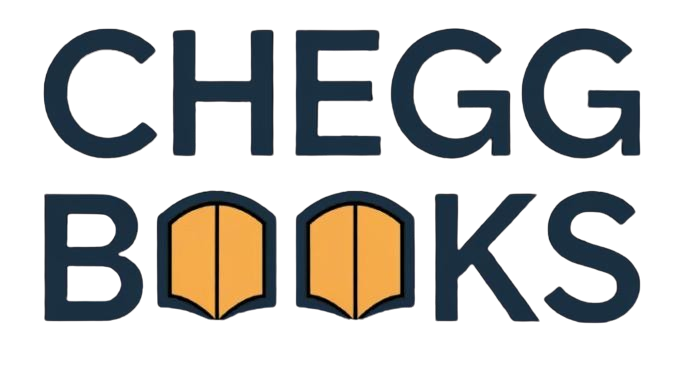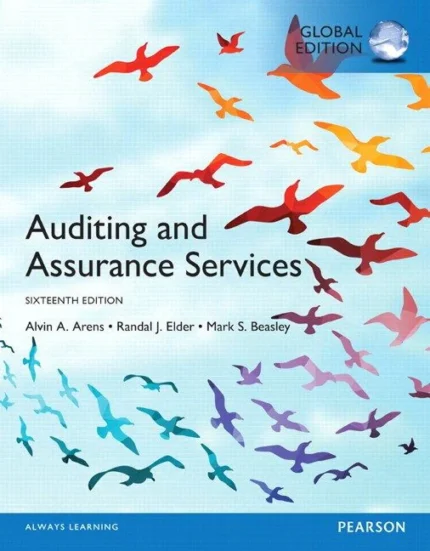![[eBook] [PDF] For Functional and Occupational Performance in Older Adults 5th Edition By Bette Bonder, Noralyn Pickens, Vanina Dal Bello-Haas](https://chegbooks.com/wp-content/uploads/2024/07/7.jpg)
![[eBook] [PDF] For The Cosmos Astronomy in The New Millennium 5th Edition By Jay Pasachoff, Alex Filippenko](https://chegbooks.com/wp-content/uploads/2024/07/2-10.jpg)
[eBook] [PDF] For Fundamental Statistics for the Social and Behavioral Sciences 2nd Edition By Howard T. Tokunaga
$100.00 Original price was: $100.00.$29.00Current price is: $29.00.
#eBook #eBook PDF #Solutions Manual #Test Bank #Mcqs #Exam Bank #Answers Key
[eBook] [PDF] For Fundamental Statistics for the Social and Behavioral Sciences 2nd Edition By Howard T. Tokunaga
1.1 What Is Statistics?
1.2 Why Learn Statistics?
1.3 Introduction to the Stages of the Research Process
1.4 Plan of the Book
1.5 Looking Ahead
1.6 Summary
1.7 Important Terms
1.8 Exercises
2.1 An Example From the Research: Winning the Lottery
2.2 Why Examine Data?
2.3 Examining Data Using Tables
2.4 Grouped Frequency Distribution Tables
2.5 Examining Data Using Figures
2.6 Examining Data: Describing Distributions
2.7 Looking Ahead
2.8 Summary
2.9 Important Terms
2.10 Formulas Introduced in This Chapter
2.11 Using IBM SPSS Software
2.12 Exercises
3.1 An Example From the Research: The 10% Myth
3.2 Understanding Central Tendency
3.3 The Mode
3.4 The Median
3.5 The Mean
3.6 Comparison of the Mode, Median, and Mean
3.7 Measures of Central Tendency: Drawing Conclusions
3.8 Looking Ahead
3.9 Summary
3.10 Important Terms
3.11 Formulas Introduced in This Chapter
3.12 Exercises
4.1 An Example From the Research: How Many “Sometimes” in an “Always”?
4.2 Understanding Variability
4.3 The Range
4.4 The Interquartile Range
4.5 The Variance (s2)
4.6 The Standard Deviation (s)
4.7 Measures of Variability for Populations
4.8 Measures of Variability for Nominal Variables
4.9 Measures of Variability: Drawing Conclusions
4.10 Looking Ahead
4.11 Summary
4.12 Important Terms
4.13 Formulas Introduced in This Chapter
4.14 Using SPSS
4.15 Exercises
5.1 Example: SAT Scores
5.2 Normal Distributions
5.3 The Standard Normal Distribution
5.4 Applying z-Scores to Normal Distributions
5.5 Standardizing Frequency Distributions
5.6 Looking Ahead
5.7 Summary
5.8 Important Terms
5.9 Formulas Introduced in This Chapter
5.10 Exercises
6.1 A Brief Introduction to Probability
6.2 Example: Making Heads or Tails of the Super Bowl
6.3 Introduction to Hypothesis Testing
6.4 Issues Related to Hypothesis Testing: An Introduction
6.5 Looking Ahead
6.6 Summary
6.7 Important Terms
6.8 Formulas Introduced in This Chapter
6.9 Exercises
7.1 An Example From the Research: Do You Read Me?
7.2 The Sampling Distribution of the Mean
7.3 Inferential Statistics: Testing One Sample Mean (s Known)
7.4 A Second Example From the Research: Unique Invulnerability
7.5 Introduction to the t-Distribution
7.6 Inferential Statistics: Testing One Sample Mean (s Not Known)
7.7 Factors Affecting the Decision About the Null Hypothesis
7.8 Looking Ahead
7.9 Summary
7.10 Important Terms
7.11 Formulas Introduced in This Chapter
7.12 Using SPSS
7.13 Exercises
8.1 An Example From the Research: Salary Survey
8.2 Introduction to the Confidence Interval for the Mean
8.3 The Confidence Interval for the Mean (s Not Known)
8.4 The Confidence Interval for the Mean (s Known)
8.5 Factors Affecting the Width of the Confidence Interval for the Mean
8.6 Interval Estimation and Hypothesis Testing
8.7 Looking Ahead
8.8 Summary
8.9 Important Terms
8.10 Formulas Introduced in This Chapter
8.11 Using SPSS
8.12 Exercises
9.1 An Example From the Research: You Can Just Wait
9.2 The Sampling Distribution of the Difference
9.3 Inferential Statistics: Testing the Difference Between Two Sample Means
9.4 Inferential Statistics: Testing the Difference Between Two Sample Means (Unequal Sample Sizes)
9.5 Inferential Statistics: Testing the Difference Between Paired Means
9.6 Looking Ahead
9.7 Summary
9.8 Important Terms
9.9 Formulas Introduced in This Chapter
9.10 Using SPSS
9.11 Exercises
10.1 Hypothesis Testing vs. Criminal Trials
10.2 An Example From the Research: Truth or Consequences
10.3 Two Errors in Hypothesis Testing: Type I and Type II Error
10.4 Controlling Type I and Type II Error
10.5 Measures of Effect Size
10.6 Looking Ahead
10.7 Summary
10.8 Important Terms
10.9 Formulas Introduced in This Chapter
10.10 Exercises
11.1 An Example From the Research: It’s Your Move
11.2 Introduction to Analysis of Variance (ANOVA)
11.3 Inferential Statistics: One-Way Analysis of Variance (ANOVA)
11.4 A Second Example: The Parking Lot Study Revisited
11.5 Analytical Comparisons Within the One-Way ANOVA
11.6 Looking Ahead
11.7 Summary
11.8 Important Terms
11.9 Formulas Introduced in This Chapter
11.10 Using SPSS
11.11 Exercises
12.1 An Example From the Research: Vote—or Else!
12.2 Introduction to Factorial Research Designs
12.3 The Two-Factor (A × B) Research Design
12.4 Introduction to Analysis of Variance (ANOVA) for the Two-Factor Research Design
12.5 Inferential Statistics: Two-Way Analysis of Variance (ANOVA)
12.6 Investigating a Significant A × B Interaction Effect: Analysis of Simple Effects
12.7 Looking Ahead
12.8 Summary
12.9 Important Terms
12.10 Formulas Introduced in This Chapter
12.11 Using SPSS
12.12 Exercises
13.1 An Example From the Research: It’s Good for You!
13.2 Introduction to the Concept of Correlation
13.3 Inferential Statistics: Pearson Correlation Coefficient
13.4 Correlating Two Sets of Ranks: The Spearman Rank-Order Correlation
13.5 Correlational Statistics vs. Correlational Research
13.6 Looking Ahead
13.7 Summary
13.8 Important Terms
13.9 Formulas Introduced in This Chapter
13.10 Using SPSS
13.11 Exercises
14.1 Predicting One Variable From Another: Linear Regression
14.2 Correlation With Two or More Predictors: Introduction to Multiple Correlation and Regression
14.3 Looking Ahead
14.4 Summary
14.5 Important Terms
14.6 Formulas Introduced in This Chapter
14.7 Using SPSS
14.8 Exercises
15.1 An Example From the Research (One Categorical Variable): Are You My Type?
15.2 Introduction to the Chi-Square Statistic
15.3 Inferential Statistic: Chi-Square Goodness-of-Fit Test
15.4 An Example From the Research (Two Categorical Variables): Seeing Red
15.5 Inferential Statistic: Chi-Square Test of Independence
15.6 Parametric and Nonparametric Statistical Tests
15.7 Looking Ahead
15.8 Summary
15.9 Important Terms
15.10 Formulas Introduced in This Chapter
15.11 Using SPSS
15.12 Exercises
Instant Downloads
At Library Sources, we make it easy for you to get your eBooks and solution manuals right away. After you buy, you can download your books instantly. No waiting! Just finish your purchase, and you get a link to download your stuff right away. We have many books for all subjects, so you always find what you need. Our service helps students, teachers, and professionals get the books they need quickly and easily.
Benefits Of Buying Solution Manuals From Library Sources
Here are the benefits of buying eBooks or solution manuals from Library Sources:
- Instant Access: Get your books and manuals immediately after purchase.
- Convenience: Download your materials from anywhere, anytime.
- Wide Selection: Choose from a large variety of subjects and topics.
- No Shipping Costs: Save money by not paying for delivery.
- Environmentally Friendly: Digital books reduce paper usage.
- Searchable Text: Easily find information within the book using search functions.
- Portable: Carry your entire library on your device.
- Cost-Effective: Often cheaper than physical copies.

![[eBook] [PDF] For Fundamental Statistics for the Social and Behavioral Sciences 2nd Edition By Howard T. Tokunaga [eBook] [PDF] For Fundamental Statistics for the Social and Behavioral Sciences 2nd Edition By Howard T. Tokunaga](https://chegbooks.com/wp-content/uploads/2024/07/9.jpg)







![[eBook] [PDF] For Nurse Practitioner Certification Examination and Practice Preparation 5th Edition](https://chegbooks.com/wp-content/uploads/2024/07/1-4.jpg)
Reviews
There are no reviews yet.